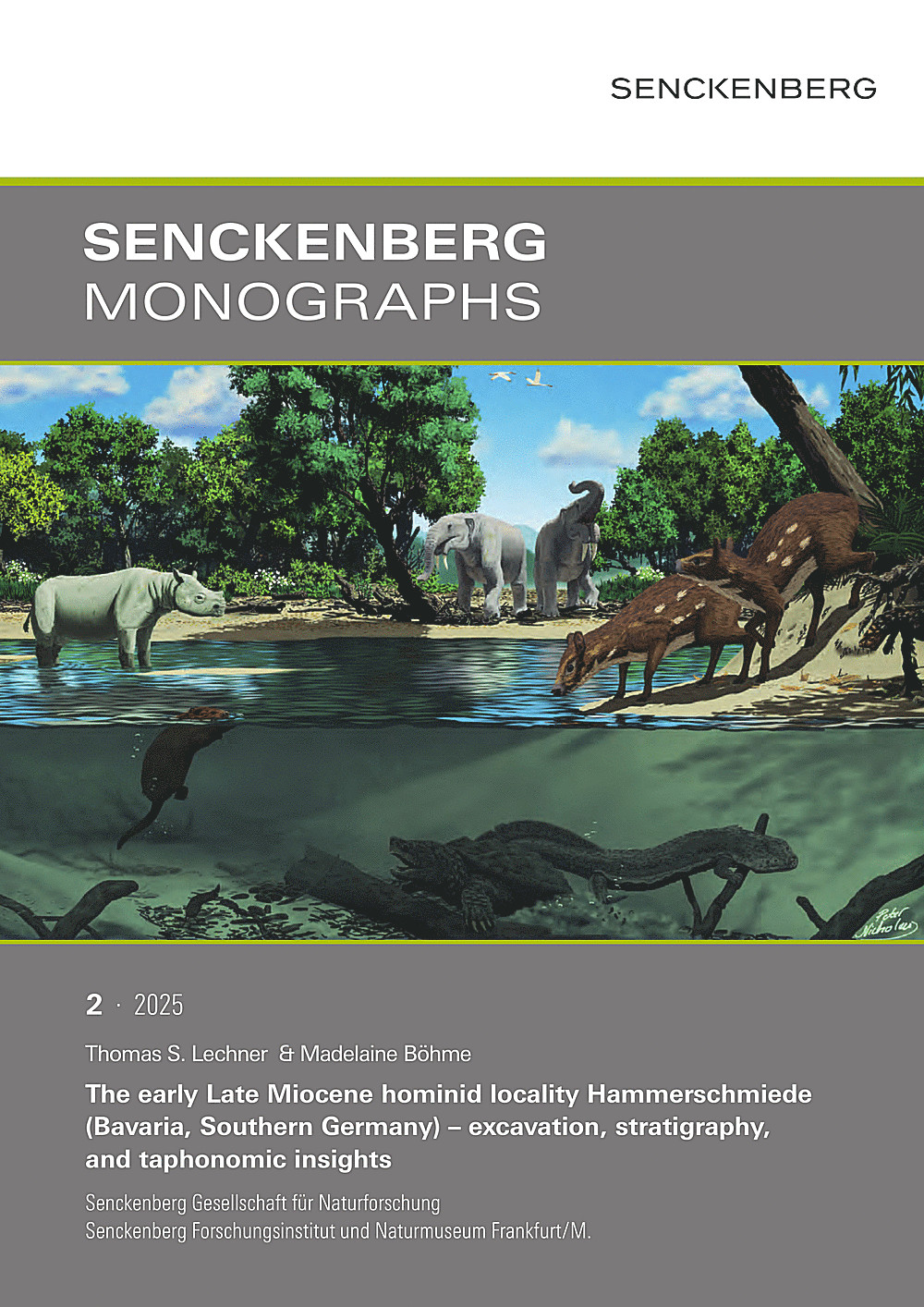Synopsis top ↑
The early Late Miocene fossil site of Hammerschmiede (Hammerschmiede Clay Pit,Pforzen, Bavaria, Germany), known for more than fifty years, has revealed unprecedented insights through recent excavations by the University of Tübingen. Since 2011, and especially after 2017 with enhanced methods, the number of fossil finds has increased in both quality and quantity, enabling detailed spatial and taphonomic studies.
The site’s sedimentary sequence, gently dipping northward, comprises seven fossil-bearing layers dated to 11.62–11.56 million years ago at the base of the Tortonian stage. Current research focuses on two distinct fluvial deposits: HAM4, a dynamic meandering river, and HAM5, a smaller, stable rivulet. Differences in fauna, microfossils and charcoal point to contrasting environments, with HAM4 reflecting a fire-prone, sparsely wooded riparian landscape and HAM5 a denser, more sheltered habitat. Both water bodies featured clean, oxygen-rich conditions, supporting diverse aquatic life including giant salamanders and unionid mussels. Complex bone accumulations reveal episodic carcass input and varied preservation, linked to flow dynamics and sediment composition.
Hammerschmiede’s exceptionally high vertebrate biodiversity – 151 species, including 86 mammals – offers a rare window into Late Miocene ecosystems with high temporal resolution, bridging fossil and modern biodiversity. This monograph highlights the significance of detailed stratigraphic and taphonomic documentation for understanding past climates and ecological dynamics.
